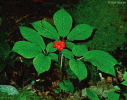 |
The
Most Suitable
Location to Grow Ginseng in Southern British Columbia |
 |
 |
The
Most Suitable
Location to Grow Ginseng in Southern British Columbia |
 |
| Home |
Conceptual
Outline |
Data
Collection |
Methodology |
Spatial
Analysis |
Conclusion |
Problems |
| Problems |
| Of course like any project, there were
many problems associated with each step in the project. The first
difficulty was finding all the data I felt was important to the
analysis. I would have liked to get data on soil type, which i
could not find in form that was usable for my project. I would
have been happy with any criteria such as; soil type, soil ph, soil
depth, soil moisture,chemical composition, or anything pertaining to
soils in the southern British Columbia. I was able to get a DEM and landcover type , with only a little begging. Although this data was easy to obtain, it was not easy to get into IDRISI in form usable for may analysis. The DEM was in the wrong projection, from the other data. This made it so none of my images would overlay. This problem was fixed by Rob Fiedler creating a projection which the DEM could be reprojected in. The next problem with the DEM is that it was for all of British Columbia. This had to be resized with the tool WINDOW. This allows for the extraction of part of an image to create a new image with the correct number of pixels as all the other images. Landcover type was in shapefile format. It was opened in ArcGIS to be able to clip it down to the southern British Columbia area. When this was opened in IDRISI, the ID values were displayed as the polygon values and not the Landcover values. This required tedious work to covert the ID values to the landcover values. The database files were opened in Excel and the ID field and the Landcover field was kept. This was saved as a comma separated file, and then opened in Notepad. Each comma was replaced with a space as to modify the file in .avl format. Therefore, this file can now be opened in the edit in IDRISI and saved as a .avl file and used to assign all ID values a landcover value. This method was required as there were over 9,000 polygons to assign landcover values too. My next difficult was obtaining temperature and precipitation data for southern British Columbia. This was done my manually collecting data in Environment Canada for temperature and precipitation and entering it in Excel. Each station (over 70 stations used) had its minimum averaged monthly temperature recorded, its maximum averaged monthly precipitation and it location in latitude and longitude. The latitude and longitude was converted to decimal degrees so it could be mapped in ArcGIS. The major problem arose when the shapefile created in ArcGIS would not overlay with the other maps in IDRISI. In IDRISI, all the images were in eastings and northings, and the temperature and precipitation was in degrees. A simple conversion in ArcGIS before transferring to IDRISI solved this problem. Again, in IDRISI the ID field value is recognized, not the temperature or precipitation values. The process of creating .avl files was done here for both temperature and precipitation. Other errors may have occurred as a result of small scale images I was using. Each map, although detailed, covered a large area and may not be enough detail to decide accurately where the best place to grow ginseng is. Landcover, for example, gave specific types that covered large areas. Of course I recognize that there is variation in landcover and more than one can be occurring in the same area, even though it is not depicted in the image. Similarly, with my temperature and precipitation data, an interpolation generalizes any variation seen between station. There is no account for change in elevation, which would have a large impact on these environmental conditions. These variations could not be accounted for in the time we have for this project, and the data I collected will have to be sufficient. |
|
|
|
||
| Previous |
|||